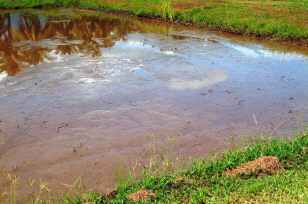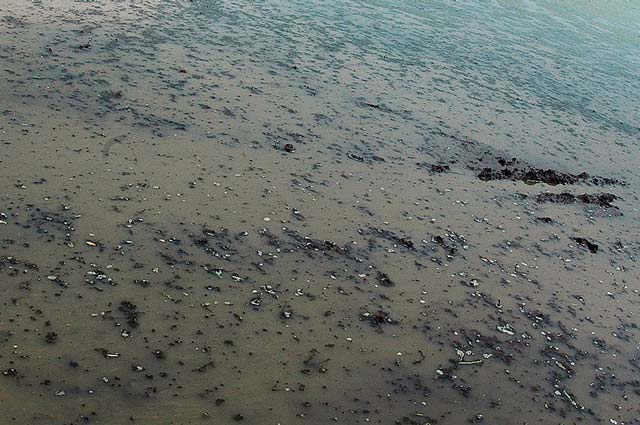Muddy water

What it does
Muddy water reduces oxygen supply for the germinating seed, thus leading to low crop establishment.
Why and where it occurs
The problem occurs when seeds germinate and/or grow in muddy water. The problem only occurs in direct-seeded fields.
Crops can be surface-broadcasted (wet or dry), drill-seeded (using machines) or broadcast and incorporated when sown on dry fields. Pre-germinated seed is typically used when wet direct seeding. Direct-seeded fields tend to have greater problems of lodging, especially when the seed is surface sown. Some fields are sown into standing water, or the water enters the field shortly after seeding.
How to identify
 Fields with muddy water usually have low crop establishment. The pattern of damage is usually general across the field.
Fields with muddy water usually have low crop establishment. The pattern of damage is usually general across the field.
There are various problems affecting crop establishment. These are cloddy soil, seed too deep, soil too soft at seeding, poor emergence in low spots in fields, heavy rainfall at seeding, soil crusting, poor seed quality, poor seed distribution, low seed rate, water stress, clogged seeder and/or pests such as ants, birds, and rats that remove seed at planting.
To confirm the cause of the problem, check or ask the farmer about the color of water at the time of crop establishment (direct seeding only).
Why is it important
Economic costs can be direct in terms of:
- Yield lost due to poor crop stand (too few plants)
- Through the increased cost of seed when high seed rates are used to compensate for planting or establishment problems.
How to manage
- For good establishment, manage water properly and ensure well-leveled water, allowing water to settle
- Ensure an appropriate seed rate with even distribution of seed
- Crop stand should be of the order of 100−200 plants per m2, use seed rates between 40−100 kg per ha







